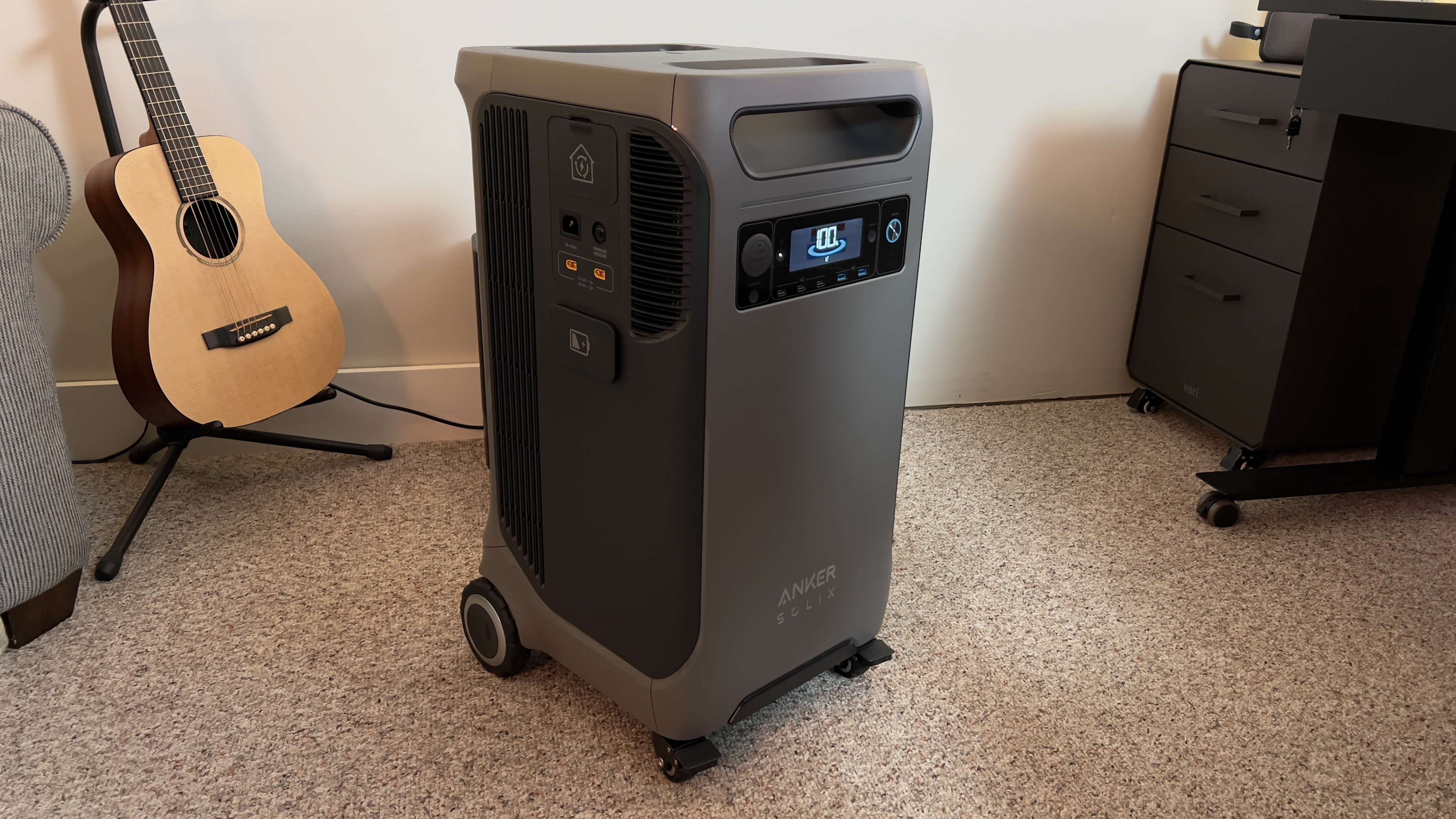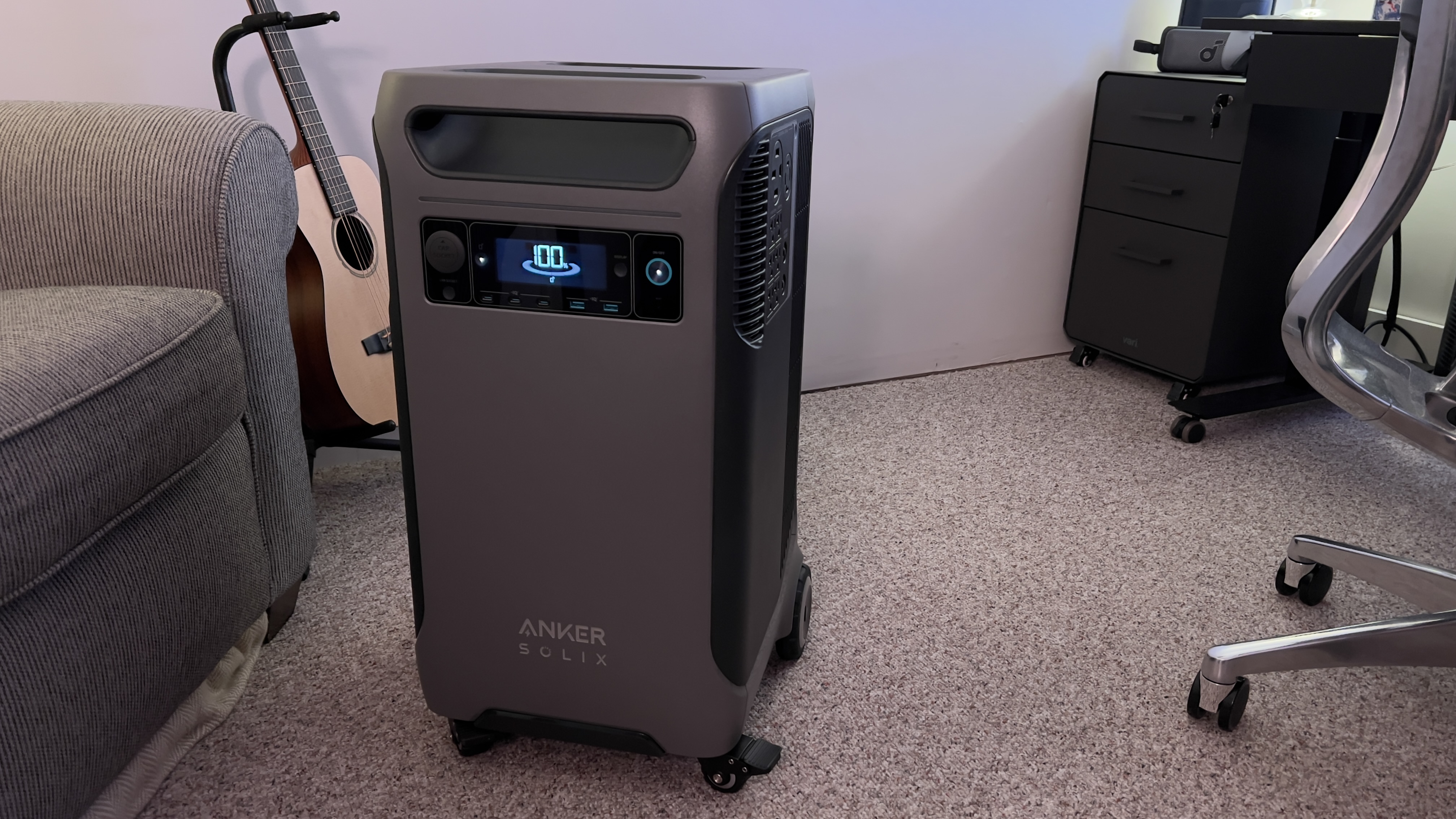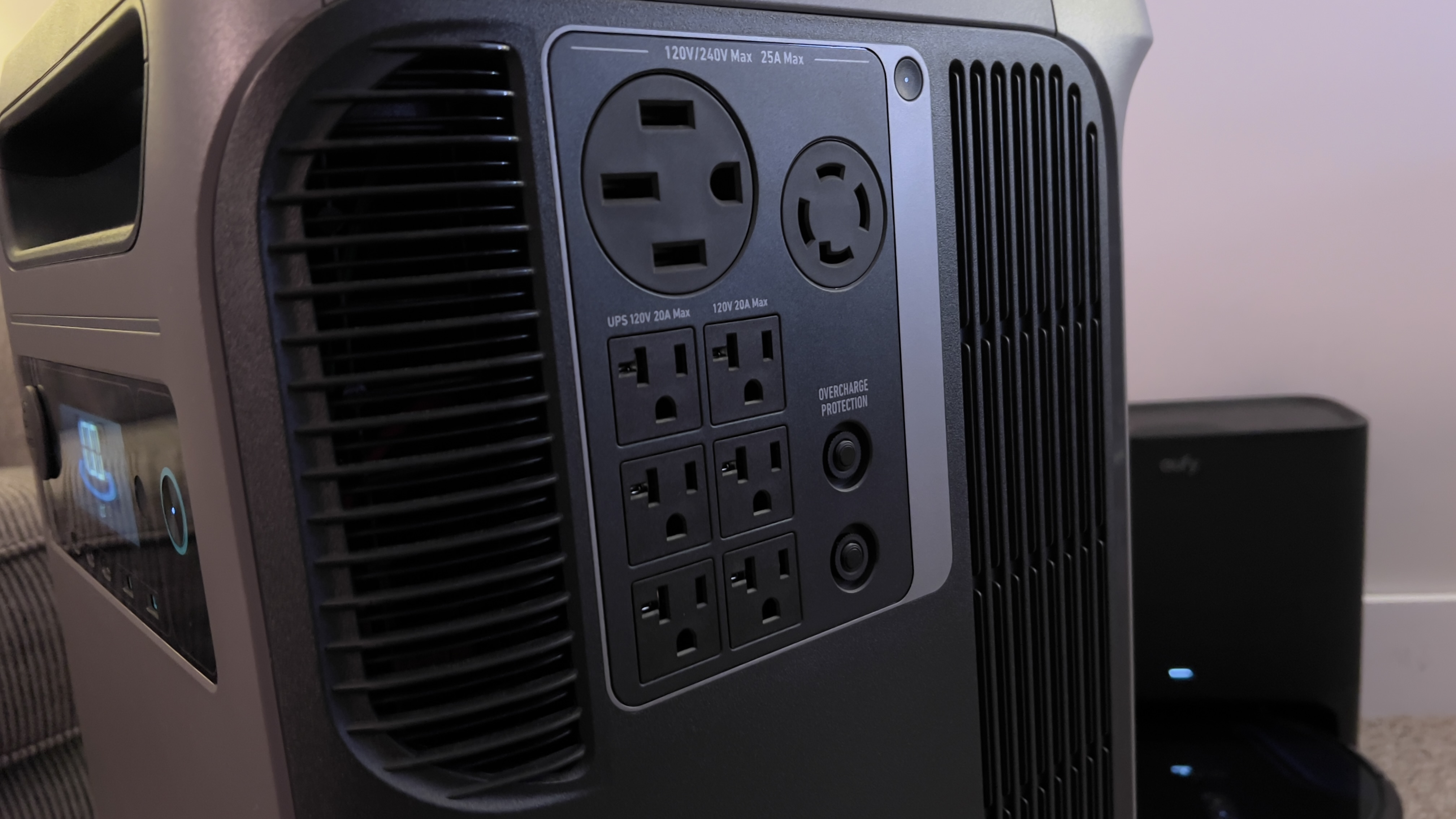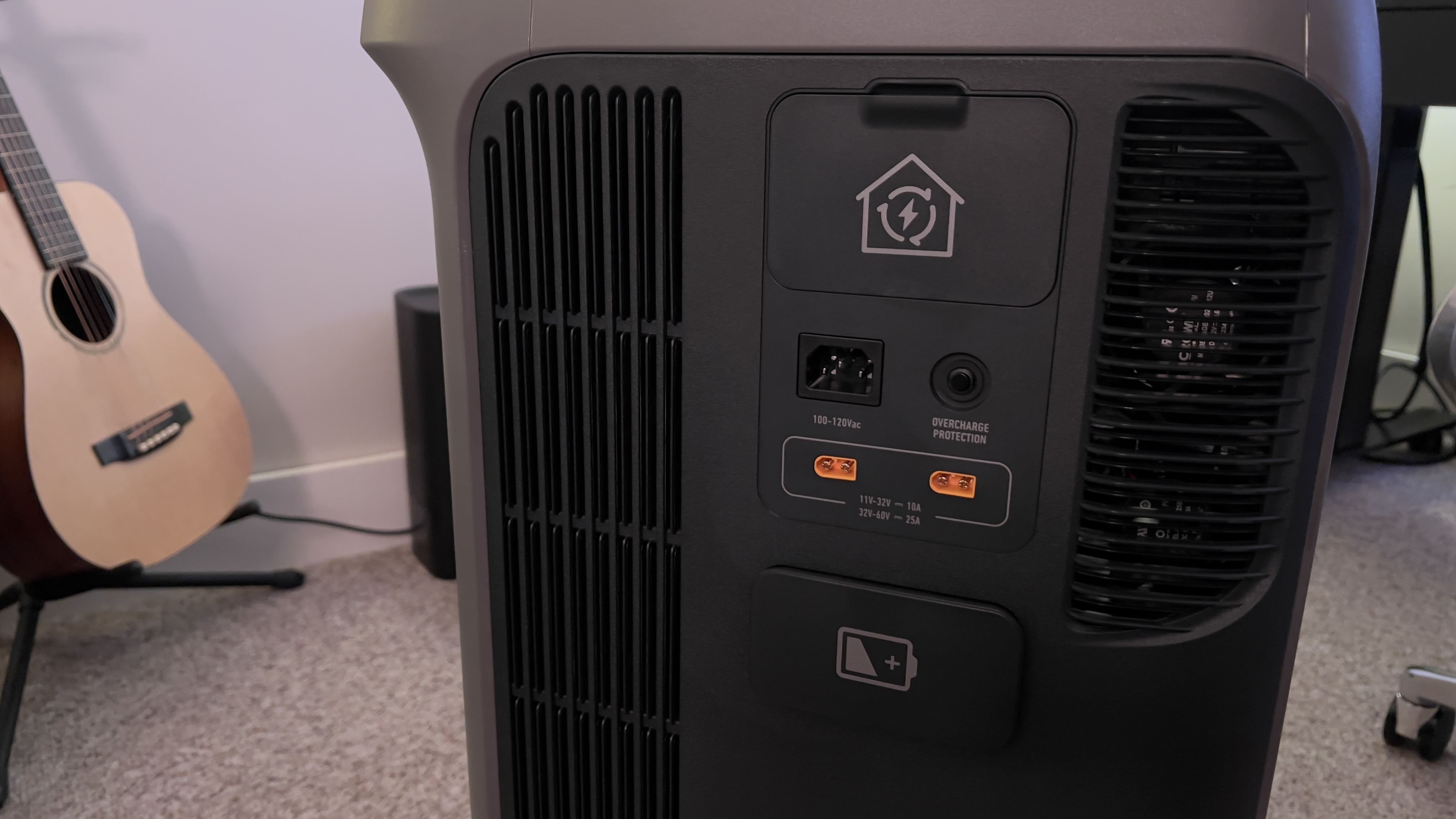
A power outage throws us back to the stone age in a world where we are more connected to devices and technology than ever. Yes, it's dramatic, but losing it out of nowhere can be shocking when you rely on lights, temperature control, sound machines, fridges, freezers, internet connectivity, cameras, and other electronics to keep things moving throughout the average day.
Most of the best portable power stations I have reviewed in our guide to the best power stations are designed to be portable. These are meant to power small devices on the go, such as camping trips or a set amount of electronics.
Backup power stations, or backup power solutions, are designed to power an entire home, or at least the essentials, in an emergency. This emergency power outage could be for a few moments, several hours, or several days. The difference is that there is less time to prepare, far more electricity is being drawn (in most cases), and the duration of not having a reliable power source is usually entirely unknown.
That's where backup generators come into play most often. The issue with these is that they are loud, run on gas, must be set up in a ventilated area, and must be regularly checked to ensure they are in working order in case they are needed.
Anker's Solix F3800 Power Station is a battery backup power solution with 3,840Wh and 6,000W / 240V output. With expansion batteries, this power station can be expanded to house up to 26,880Wh, and with another F3800 and batteries, this can be doubled to 53,760Wh. Could this be the best home battery backup system available on the market right now? I think it might be.

Anker Solix F3800: Unboxing and First Impressions
The first thing I should note about the Solix F3800 is its massive size. I'm used to power stations being heavy (my beloved EcoFlow Delta 2 Max is 50.7lb, and my Anker 767 PowerHouse is 67.2lb), but I can usually still carry them and throw them in the back of my Jeep and tote them around when needed or wanted. The F3800, in stark contrast, is 132lb and 27.6 x 15.3 x 15.6in. Thankfully, in authentic Anker Solix Style, it has wheels to help maneuver this beast, but it is still a bit of work if I want to change what floor of my house the F3800 is on or if I need to load it into a vehicle.
Capacity: 3840Wh
Charge Cycles: 3,000
Weight and Dimensions: 132.3lb; 27.6 x 15.3 x 15.6in
Ports: UPS AC Port x3, AC Port x3, NEMA 14-50 AC Port, L14-30R AC Port, USB-C x3, USB-A x2, DC x 1, Home panel port, Expansion battery port, Dual solar panel input port, car input port
AC Output: 120 and 240 Volts
Unboxing the Solix F3800 was difficult simply due to its size, but once I pulled everything out, the setup was straightforward. Everything is all in one unit, with plenty of ports to run just about anything I need. I could get SOLIX's Transfer switch or the Smart Home Power Kit and run everything through my house. More on that later.
The last thing I did to set this unit up was pairing it to my Anker app. This first-party app allowed me to run a firmware update, connect to my Wi-Fi so I could check its status from anywhere in the world, name the device, and set preferences like running Fahrenheit for my temperature readout, what power I would use to charge the device, and even screen brightness. Once setting all these parameters, I plugged the device into my standard AC outlet using a provided IEC power cable and charged the Solix F3800 up to 100%.
Anker Solix F3800: Design and Build Quality
Anker has designed this power station to be efficient and easy to use. There are different ways to charge the Solix, and they are all located on the left side of the unit if you are facing it from the front. On the right side, you can find all six 120v AC ports and both 120/240v max ports. Meanwhile, on the front of the unit, you can see the USB-A, USB-C, and DC ports and the display screen.
Among the 120V AC ports, three are clearly labeled as UPS. This indicates that these ports are connected to an uninterruptible power supply, which provides backup power in case of a power outage or other electrical issues. The other ports can only be used when the power supply is disconnected and is running on its internal battery.
The 120V/240V split-phase output is designed to give those demanding 240V units capable power, though only one at a time. However, the fact that I can power a dryer, an entire industrial fridge, an RV, my house, or even charge an electric vehicle with this thing is just incomprehensible.
While I haven't had the opportunity to patch into my main circuit breaker and run my entire house, my math from actual use and capacity and my usage according to my electric company, I could run my whole house without any power-saving modifications for nearly four hours on just the main battery.
If I expanded to adding more power extenders, not even another main F3800, I could extend those 4 hours to an entire day. With another F3800, I could open it for nearly two and a half days, running everything in my house as usual. Of course, if we were in a power outage, I wouldn't care to run my robot vacuums or my treadmill or have all my TVs or lights on. I wouldn't manage to have Christmas decorations or yard lights lit up, nor would I run my dryer, space heaters, or any of the best 3D printers. I could pare down quite a bit. I have a very power-hungry house. All this slimming down to essentials would allow me to extend the power to what needs to run even further.

Anker Solix F3800: In use
As I mentioned, this power station is quite large. However, while it is significant, there is a massive amount of power that this unit can produce. I'm still shocked at how something of this size could power as much as it does. My wife and I have three kids under five at the time of writing this (it turns out kids continue to get older every day).
It's 2024, and admittedly, my two older kids have iPads. They use it for shows, coloring, and learning; my son is even into mancala, mahjong, and battleship. On top of this, all of my kids have sound machines that play a quiet white noise to help them sleep, and it changes colors for when they can get up in the morning. We always have 73 smart devices connected to our house, plus all the non-smart technology.
All that to say, my house runs on technology. Our home is not a happy one when the power has gone out during a snowstorm or other inclement weather. With the Anker Solix F3800, I now have confidence that I can power just about anything in my house for an extended period.

Later this year, Anker will release a Transfer Switch and a Smart Home Panel. The Transfer switch will allow manual switching of any breaker in my house from shore power (power from the grid) to my Anker Solix. So, in the event of an outage, I can run whatever devices I want on any given breaker through the standard outlets in my house as though there was no power outage. The Smart Home Panel will add even more functionality, integrating the grid power, rooftop solar, and the Solix power station, all for the best and most seamless backup solution.
Until then, I am happy to use this as a large battery that I plug devices into. I can run extension cords to my internet, space heaters, lights, and anything else I want or need. However, one bummer that I noticed is that I cannot charge another (at least not large) power station with this power station. I tried charging my EcoFlow Delta 2 Max (my second largest power station) with the F3800, and it gave a warning stating that there was a risk of damage. While unsurprised, I am thankful that Anker programmed this feature into the F3800 to avoid damage.
Anker Solix F3800: Final verdict
Anker outdid themselves with the Solix F3800. I was already impressed with their previous flagship power station, the Anker 767 PowerHouse, but the Solix F3800 blew my expectations out of the water. The power capacity, the expandable power capacity with battery expansions, the ability to tether two F3800s together to gain even more output power, and the intelligent features all make this power station an incredibly impressive contender in the world of battery backup solutions and power stations. If you're looking for a solid power station, consider the pricy yet remarkably impressive Anker Solix F3800.
- Looking for something smaller? We've reviewed the best portable chargers.







